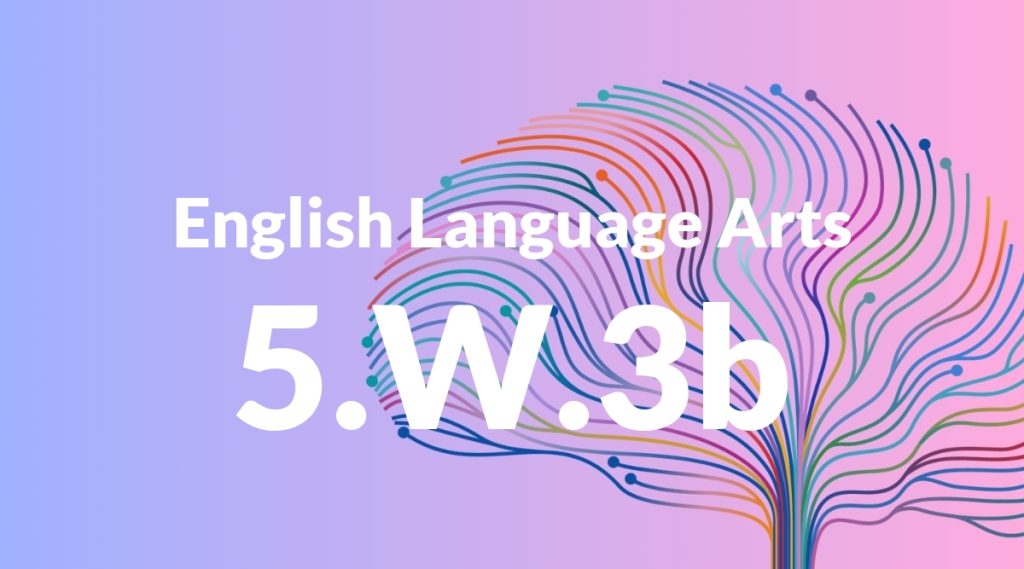Standard: 5.W.3 – Write narratives to develop real or imagined experiences or events using effective technique, descriptive details, and clear event sequences.
Grade level: Grade 5
Subject: English Language Arts
Domain: Writing
Teacher Overview
This standard focuses on helping students write narratives that effectively develop real or imagined experiences using descriptive details and clear event sequences. Mastery of this standard is crucial as it builds foundational writing skills that are essential for more advanced writing tasks in higher grades. Before tackling this standard, students should be comfortable with basic sentence structure, grammar, and writing simple paragraphs. They should also understand the basic elements of a story, such as the beginning, middle, and end.
After mastering this standard, students will be able to write more complex narratives, incorporating dialogue, advanced plot structures, and character development. They will also improve their skills in editing and revising their work.
Common Misconception 1
A common misconception is that narratives must be entirely factual. This is incorrect because narratives can blend real experiences with fictional elements to create engaging stories.
Intervention 1
Provide examples of narratives that blend fact and fiction. Encourage students to write their own stories by starting with a real event and adding imaginative details.
Common Misconception 2
Another misconception is that narratives do not need a clear sequence of events. This is incorrect as a coherent sequence is essential for the reader to understand the story.
Intervention 2
Use graphic organizers, such as story maps or timelines, to help students plan their narratives. Practice sequencing activities to reinforce the importance of a logical flow of events.
Prerequisite Knowledge
Students should have a basic understanding of sentence structure, grammar, and the ability to write simple paragraphs. They should also be familiar with the concept of a story having a beginning, middle, and end.
Subsequent Knowledge
Students will develop the ability to create more complex narratives, including the use of dialogue, advanced plot structures, and character development. They will also learn to edit and revise their work for clarity and coherence.
Instructional Activities
- Have students write a personal narrative about a memorable event in their life.
- Create a class story where each student contributes a paragraph, focusing on maintaining a clear sequence of events.
- Use story prompts to inspire students to write fictional narratives.
- Have students peer review each other’s stories, focusing on descriptive details and event sequences.
- Incorporate multimedia, such as drawing storyboards, to help students visualize their narratives.




